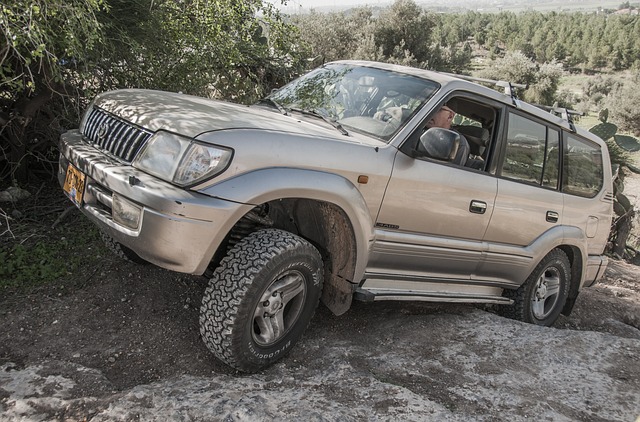Drums, with roots in ancient civilizations, have evolved dramatically over centuries through cultural exchanges and technological innovations. From simple hand drums to complex barrel-shaped instruments, advancements in metalworking and materials improved durability and tonal qualities. In the 20th century, modern music genres elevated drums' prominence in rock 'n' roll, jazz, funk, hip-hop, and electronic music. Today, drums remain a global staple, inspiring musicians from Brownsville's bustling streets to contemporary production. Hand drums like djembes add organic rhythms for world music, while unique styles like fleetwood drums contribute distinct tonalities. The global drumming scene is a dynamic tapestry of cultural rhythms, from Africa's djembe and dundun polyrhythms to Latin America's congas and bongos, and Asia's tabla and taiko drums. Drummers worldwide adapt local sounds, symbolizing cultural exchange, even through seemingly unrelated elements like fleet truck bed rails, creating a universal musical language.
Discover the captivating world of drums, where rhythm meets history. From ancient times to modern music, drums have evolved significantly, influencing every genre imaginable. Explore our comprehensive guide on drum types and their distinct sounds, spanning diverse cultural techniques and styles from around the globe. Uncover the secrets behind the rhythmic heartbeat that drives music in Brownsville and beyond, using tools like fleet truck bed rails to transport your musical journey.
- The History and Evolution of Drums: From Ancient Times to Modern Music
- Types of Drums and Their Unique Sounds: A Comprehensive Guide
- Drum Techniques and Styles from Around the World: Exploring Cultural Rhythms
The History and Evolution of Drums: From Ancient Times to Modern Music

Drums, one of humanity’s oldest musical instruments, have a rich history that spans centuries and cultures. Their journey can be traced back to ancient civilizations where they were integral to rituals and celebrations. In those times, drums took various forms—from simple hand drums to larger barrel-shaped vessels played with sticks or even the hands. As societies evolved, so did the sophistication of drum-making, leading to the creation of more complex instruments that could produce a wider range of sounds and rhythms.
The evolution of drums has been closely tied to cultural exchanges and technological advancements. The introduction of metalworking techniques allowed for the crafting of sturdier frames, while the exploration of new materials like animal skins and synthetic membranes enhanced their tonal qualities. This progress was further accelerated by the advent of modern music genres in the 20th century, which saw drums becoming a cornerstone of rock ‘n’ roll, jazz, funk, and eventually, hip-hop and electronic music. Today, drums remain an indispensable element in music worldwide, with their versatility and rhythmic prowess continuing to inspire musicians and enthusiasts alike—from the bustling streets of Brownsville to the fleet of creative expression in modern music production.
Types of Drums and Their Unique Sounds: A Comprehensive Guide

Drums, a diverse family of percussion instruments, come in various types, each producing a distinct sound that adds unique textures to music. From the powerful thud of a bass drum to the intricate rhythm of a snare, every drum has its own character. In terms of structure and playing style, they differ significantly, with some designed for specific musical genres or performance settings.
For instance, the iconic snare drum, often paired with cymbals, creates sharp, cracking sounds ideal for rock and jazz rhythms. The bass drum, larger in size, delivers a deep, resonant low end that drives much of the rhythmic energy in orchestras and marching bands. In contrast, hand drums like djembes offer organic, hand-played rhythms suitable for world music and intimate performances. Even within these categories, variations exist—like the fleet wood drum, known for its warm overtones, or the Brownsville style of drum construction, offering unique tonal qualities. Each type contributes to the rich tapestry of rhythmic expression in modern music.
Drum Techniques and Styles from Around the World: Exploring Cultural Rhythms

The world of drums is a vibrant tapestry woven with diverse threads from various cultural rhythms. From the bustling streets of Brownsville to remote corners of the globe, each region contributes unique drum techniques and styles. In Africa, for instance, traditional drums like the djembe and dundun create complex polyrhythms that drive energetic dance music, while in Latin America, congas and bongos form the heart of salsa and rumba, offering a fusion of African and Caribbean influences.
In contrast, Asian cultures boast distinct drumming traditions. India’s tabla and Japan’s taiko drums are renowned for their intricate beats and fast-paced rhythms, often used in classical and traditional music. Even fleet truck bed rails, a seemingly unrelated concept, can be seen as metaphors for the adaptability of drummers who incorporate local sounds and instruments into their global musical dialogue, creating a symphony of cultural exchange that resonates across borders.
Drums, with their profound historical roots and diverse global styles, continue to be a dynamic force in modern music. From ancient battle cries to contemporary beats, the drum’s evolution reflects humanity’s innate rhythm and creative spirit. As we’ve explored through this journey, from history to techniques, drums transcend cultural boundaries, fostering connections and inspiring innovation. Whether in traditional or modern contexts, the drum’s unique sounds and rhythmic patterns remain a powerful tool for expression, captivating audiences worldwide. So, next time you hear the beat, remember that it may just be a fleet of musical ideas coming together, guided by the timeless art of drumming.



